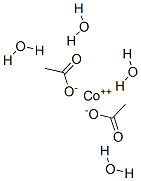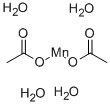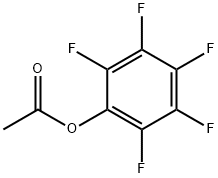Cobalt(II) acetate tetrahydrate
Synonym(s):Cobalt(II) acetate tetrahydrate;Cobaltous acetate tetrahydrate
- CAS NO.:6147-53-1
- Empirical Formula: C4H14CoO8
- Molecular Weight: 249.08
- MDL number: MFCD00149569
- EINECS: 612-153-6
- SAFETY DATA SHEET (SDS)
- Update Date: 2024-12-18 14:08:52

What is Cobalt(II) acetate tetrahydrate?
Chemical properties
Reddish violet deliequecent crystals.
The Uses of Cobalt(II) acetate tetrahydrate
- Cobalt(II) acetate tetrahydrate is used to prepare complexes for examination of the properties of metals with unusual coordination geometries.
- used as a catalyst for oxidation and esterification.
- used as an industrial catalyst to harden paints and varnishes, an active catalyst for oxidation and esterification reactions.
The Uses of Cobalt(II) acetate tetrahydrate
Cobalt(II) acetate tetrahydrate is used as an industrial catalyst to harden paints and varnishes, an active catalyst for oxidation and esterification reactions. It is also used to prepare metal complexes having unusual coordination geometry.
The Uses of Cobalt(II) acetate tetrahydrate
Cobalt(II) acetate tetrahydrate may be used in the preparation of [Co3(OH)2(H2O)2(aptet)4] (aptet = 4-aminophenyltetrazolate) and new tetradentate cobalt(II)-Schiff base complex.
What are the applications of Application
Cobalt(II) acetate tetrahydrate is a precursor to various oil drying agents
What are the applications of Application
Cobalt(II) acetate tetrahydrate may be used in the synthesis of the following:
- cobalt nanoparticles.
- cobalt(II)–aminophenyltetrazolate coordination polymer.
- tricobalt complexes with mixed μ-acetato and μ-pyrazolato ligands.
General Description
Cobalt(II) acetate tetrahydrate has an octahedral structure, the central cobalt orbit is coordinated by four water molecules and two acetate ligands. Cobalt(II) acetate tetrahydrate becomes anhydrous by 140oC.
Safety Profile
Moderately toxic by ingestion. Questionable carcinogen. A skin and eye irritant. Human mutation data reported. See also COBUT COMPOUNDS. When heated to decomposition it emits acrid smoke and irritating fumes.
Purification Methods
Several recrystallisations from 50% aqueous acetic acid give the tetrahydrate. It is converted to the anhydrous salt by drying at 80o/1mm for 60hours. [Beilstein 2 IV 120.]
Properties of Cobalt(II) acetate tetrahydrate
| Melting point: | 140 °C |
| Density | 1,71 g/cm3 |
| refractive index | 1.542 |
| storage temp. | Store at +5°C to +30°C. |
| solubility | 348g/l |
| form | Solid |
| color | Red |
| Specific Gravity | 1.71 |
| PH Range | 6.8 |
| Odor | Acetic acid odour |
| PH | 7.2 (50g/l, H2O, 20℃) |
| Water Solubility | 380 g/L (20 ºC) |
| Sensitive | Hygroscopic |
| Merck | 14,2433 |
| BRN | 3731397 |
| Stability: | Stable. Avoid moisture, heat. |
| CAS DataBase Reference | 6147-53-1(CAS DataBase Reference) |
| EPA Substance Registry System | Cobalt acetate tetrahydrate (6147-53-1) |
Safety information for Cobalt(II) acetate tetrahydrate
| Signal word | Danger |
| Pictogram(s) |
 Exclamation Mark Irritant GHS07  Health Hazard GHS08  Environment GHS09 |
| GHS Hazard Statements |
H302:Acute toxicity,oral H317:Sensitisation, Skin H319:Serious eye damage/eye irritation H334:Sensitisation, respiratory H341:Germ cell mutagenicity H410:Hazardous to the aquatic environment, long-term hazard |
| Precautionary Statement Codes |
P273:Avoid release to the environment. P280:Wear protective gloves/protective clothing/eye protection/face protection. P301+P312:IF SWALLOWED: call a POISON CENTER or doctor/physician IF you feel unwell. P302+P352:IF ON SKIN: wash with plenty of soap and water. P305+P351+P338:IF IN EYES: Rinse cautiously with water for several minutes. Remove contact lenses, if present and easy to do. Continuerinsing. P308+P313:IF exposed or concerned: Get medical advice/attention. |
Computed Descriptors for Cobalt(II) acetate tetrahydrate
| InChIKey | ZBYYWKJVSFHYJL-UHFFFAOYSA-L |
Cobalt(II) acetate tetrahydrate manufacturer
JSK Chemicals
Kronox Lab Sciences Pvt Ltd
Rivashaa Agrotech Biopharma Pvt. Ltd.
Axiom Chemicals Pvt Ltd (Axiom Corporation)
ARRAKIS INDUSTRIES LLP
Anand Agencies
New Products
(S)-3-Aminobutanenitrile hydrochloride 4-Methylphenylacetic acid N-Boc-D-alaninol N-BOC-D/L-ALANINOL Tert-butyl bis(2-chloroethyl)carbamate N-octanoyl benzotriazole 3-Morpholino-1-(4-nitrophenyl)-5,6-dihydropyridin- 2(1H)-one Furan-2,5-Dicarboxylic Acid S-2-CHLORO PROPIONIC ACID ETHYL ISOCYANOACETATE 2-Bromo-1,3-Bis(Dimethylamino)Trimethinium Hexafluorophosphate 4-IODO BENZOIC ACID 3-NITRO-2-METHYL ANILINE 1-(2,4-DICHLOROPHENYL) ETHANAMINE (2-Hydroxyphenyl)acetonitrile 4-Bromopyrazole 5,6-Dimethoxyindanone 2-(Cyanocyclohexyl)acetic acid 4-methoxy-3,5-dinitropyridine 1-(4-(aminomethyl)benzyl)urea hydrochloride 2-aminopropyl benzoate hydrochloride diethyl 2-(2-((tertbutoxycarbonyl)amino) ethyl)malonate tert-butyl 4- (ureidomethyl)benzylcarbamate Ethyl-2-chloro((4-methoxyphenyl)hydrazono)acetateRelated products of tetrahydrofuran








You may like
-
 6147-53-1 Cobaltous acetate tetrahydrate 98%View Details
6147-53-1 Cobaltous acetate tetrahydrate 98%View Details
6147-53-1 -
 Cobalt acetate tetrahydrate 98%View Details
Cobalt acetate tetrahydrate 98%View Details -
 Cobalt(II) acetate tetrahydrate, Co 24% CAS 6147-53-1View Details
Cobalt(II) acetate tetrahydrate, Co 24% CAS 6147-53-1View Details
6147-53-1 -
 Cobalt(II) acetate tetrahydrate, Co 24% CAS 6147-53-1View Details
Cobalt(II) acetate tetrahydrate, Co 24% CAS 6147-53-1View Details
6147-53-1 -
 Cobalt acetate CAS 6147-53-1View Details
Cobalt acetate CAS 6147-53-1View Details
6147-53-1 -
 Cobalt acetate tetrahydrate 98%View Details
Cobalt acetate tetrahydrate 98%View Details -
 Cobalt (II) Acetate Tetrahydrate extrapure AR CAS 6147-53-1View Details
Cobalt (II) Acetate Tetrahydrate extrapure AR CAS 6147-53-1View Details
6147-53-1 -
 Cobalt acetate, GR CAS 6147-53-1View Details
Cobalt acetate, GR CAS 6147-53-1View Details
6147-53-1